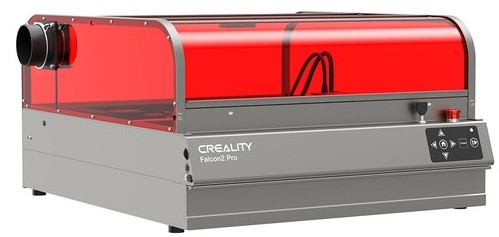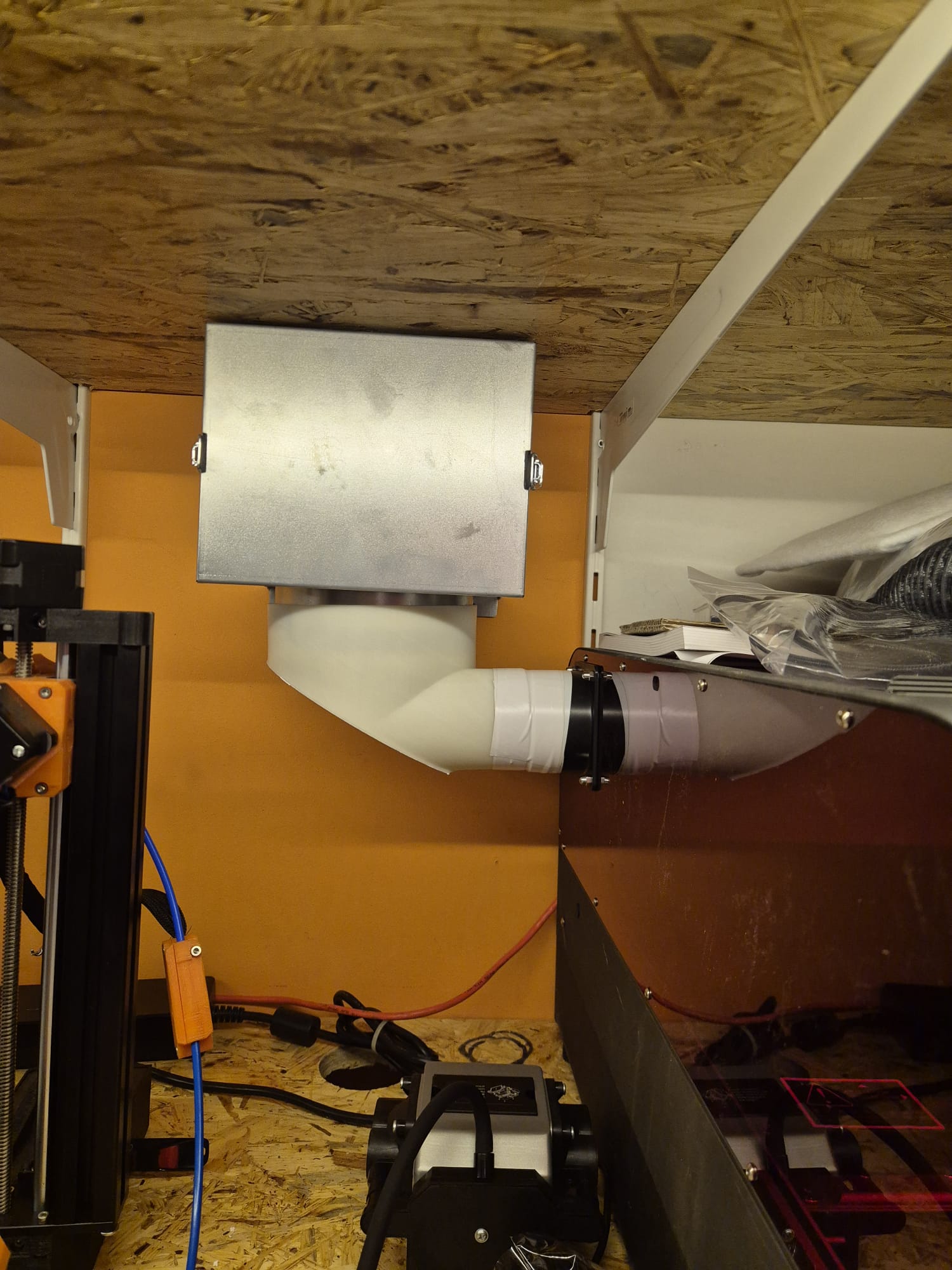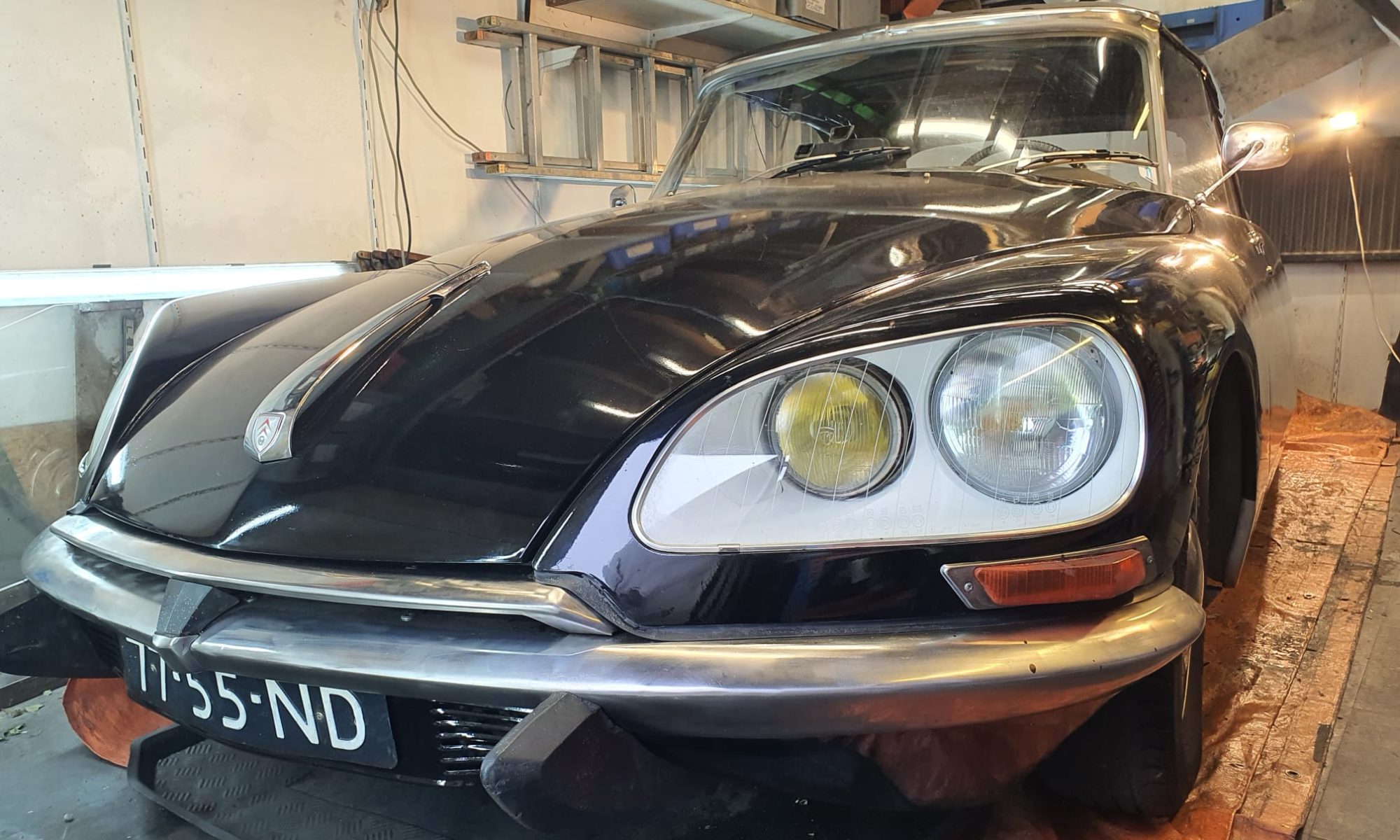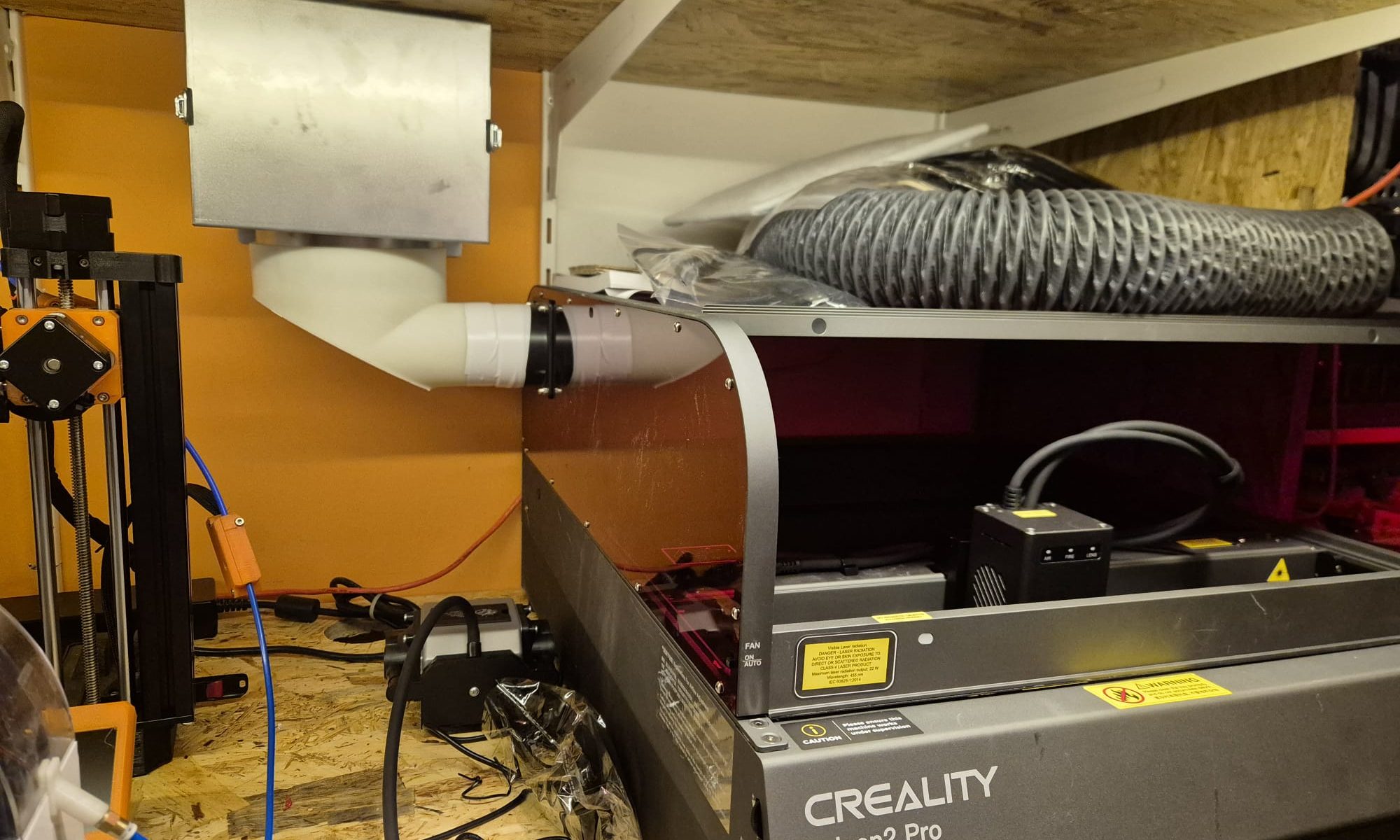Finally I made the transition to a robust diode laser machine for my wood and acrylic cutting work. Until now, I have been using my K40 CO2 40 Watt laser cutter/engraver. I will continue to use the K40 machine for clear glass, as it cannot be cut/engraved with a diode laser.

The Creality Falcon 2 Pro with 22Watt output power is chosen because the laser is quite powerful, but mainly because I will be using this machine in my study with an exhaust vent through the roof of the house. I have the K40 CO2 laser in the garage, which works fine. But it is difficult to use easily because of the limited space in the garage. I wanted to keep my big laser ready to use, which means that I need a permanent setup. Because the K40 is water-cooled and has a fairly large cabinet due to the large laser tube, it doesn’t really make it easy to handle when moving it all the time.
The Creality Falcon 2 Pro has a relatively small cabinet and a closed housing. therefore, I could put it in my existing in-house 3d printerroom. It did not go easy, though. I needed to get a couple of 3d printers decommissioned to make the required space available.
For the exhaust of the Creality Facon 2 pro laser engraver/cutter, I have installed a filter cabinet with a coarse and fine filter + carbon filter. This can get the exhaust gases somewhat filtered so they can be safely discharged. This is especially necessary with acrylic and other plastics.

The above connecting piece between the metal filterbox and the laser housing was designed in Openscad, and printed in white ABS on my Voron600.
The exhaust pipe runs from the workroom on the first floor to the second floor and then a short distance through the house to the former exhaust of the central heating boiler. I no longer use that central heating boiler because of the heat pump. All special connecting pieces have been designed in Openscad, printed in white ABS on the Voron600.
The 110x55mm exhaust pipes are flat pipes so that I can run them neatly along the wall with standard available 90-degree bends in the corners.
There is a high-volume additional retraction fan mounted just before the outlet through the roof.


